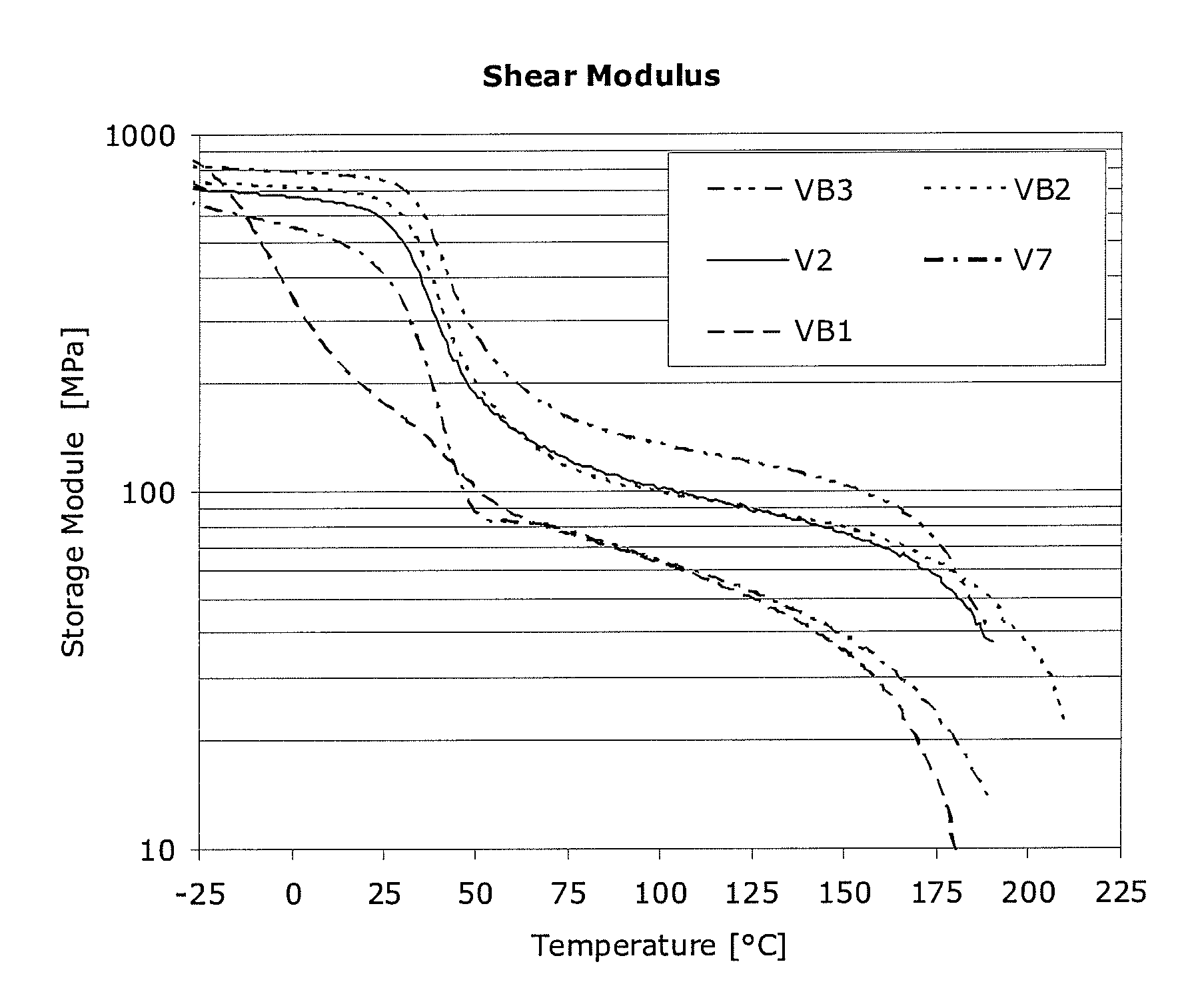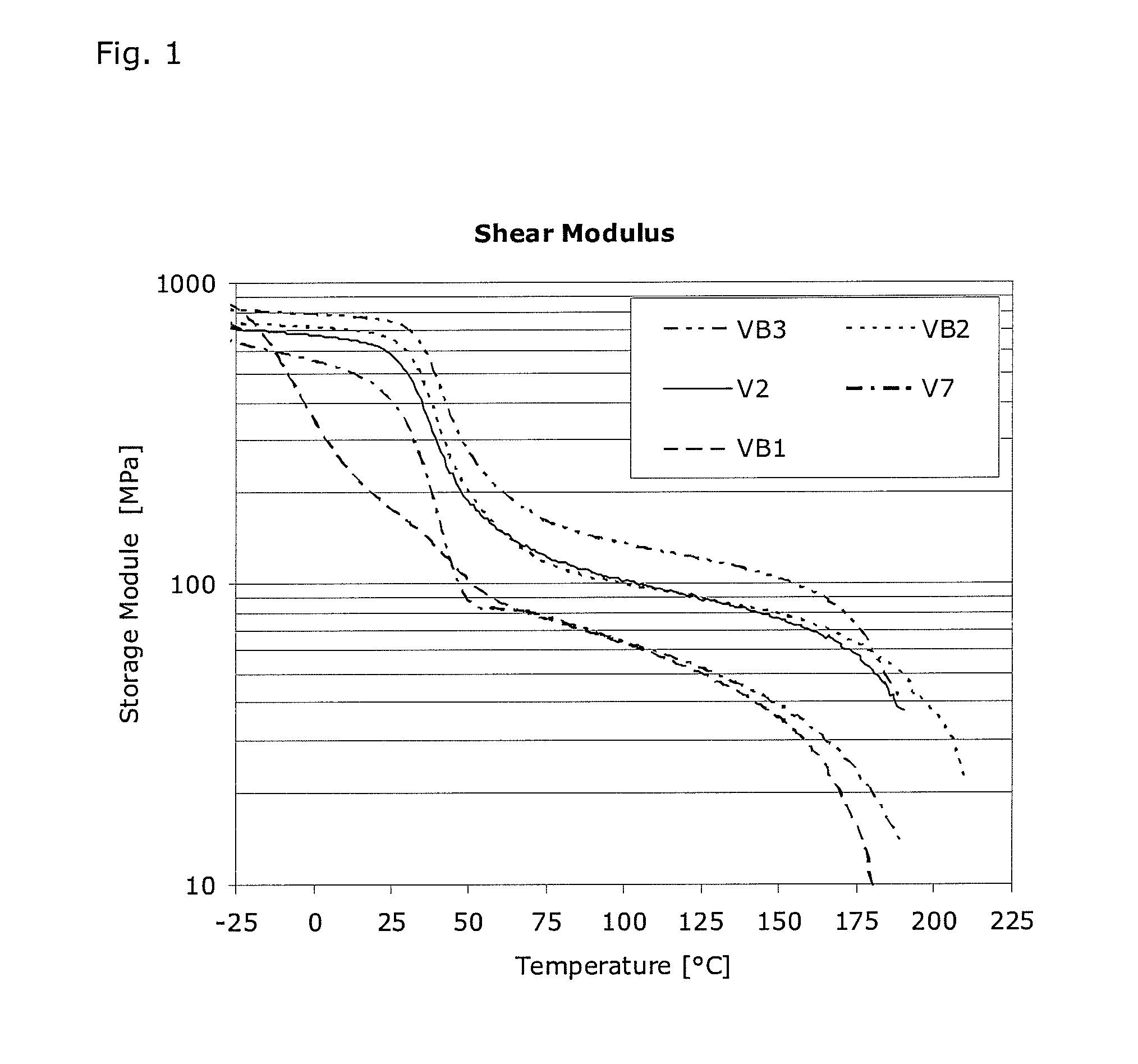Polyamide blend molding compound
a technology of polyamide and blend, applied in the direction of transportation and packaging, inorganic insulators, other chemical processes, etc., can solve the problem that the pedal pressure alone would require too much effort to actuate the disk brakes of a car, and achieve the effect of high flexibility
- Summary
- Abstract
- Description
- Claims
- Application Information
AI Technical Summary
Benefits of technology
Problems solved by technology
Method used
Image
Examples
Embodiment Construction
[0089]The present invention will be explained in closer detail by reference to the enclosed drawing that is intended to illustrate but not to limit the present invention, wherein:
[0090]FIG. 1 shows a logarithmic view of the shear modulus curves on molded bodies produced with the molding compounds in accordance with the invention and comparative molding compounds.
DETAILED DESCRIPTION OF THE INVENTION
[0091]FIG. 1 shows the shear modulus curves depending on the temperature. Comparative example 1 (VB1), which is preferably used for applications such as brake booster lines, shows a very flat progression with a storage module of approx. 800 MPa at −25° C. and with a storage module that is close to 10 MPa at 180° C. The comparative examples VB2 and VB3 still show a storage module of 60 MPa at 180° C. The tests V2 and V7 in accordance with the invention show a storage modulus of at least 20 MPa at 180° C. and less than 700 MPa at −25° C.
[0092]The component A of the polyamide blend content o...
PUM
| Property | Measurement | Unit |
|---|---|---|
| Temperature | aaaaa | aaaaa |
| Temperature | aaaaa | aaaaa |
| Temperature | aaaaa | aaaaa |
Abstract
Description
Claims
Application Information
 Login to View More
Login to View More - R&D
- Intellectual Property
- Life Sciences
- Materials
- Tech Scout
- Unparalleled Data Quality
- Higher Quality Content
- 60% Fewer Hallucinations
Browse by: Latest US Patents, China's latest patents, Technical Efficacy Thesaurus, Application Domain, Technology Topic, Popular Technical Reports.
© 2025 PatSnap. All rights reserved.Legal|Privacy policy|Modern Slavery Act Transparency Statement|Sitemap|About US| Contact US: help@patsnap.com



